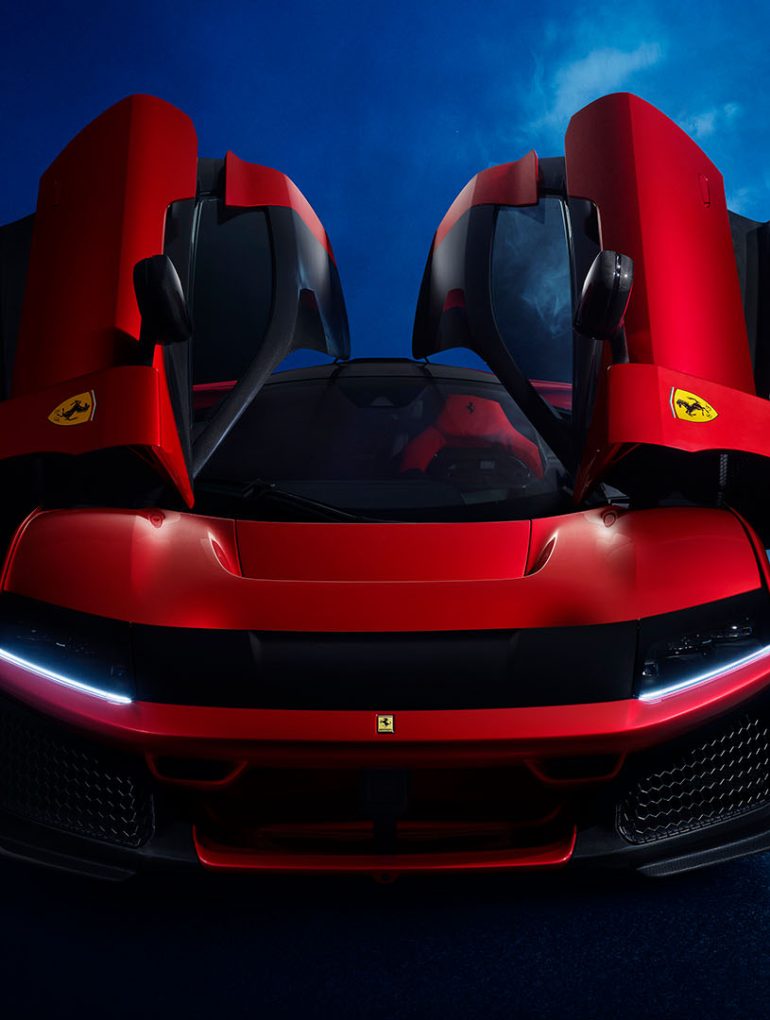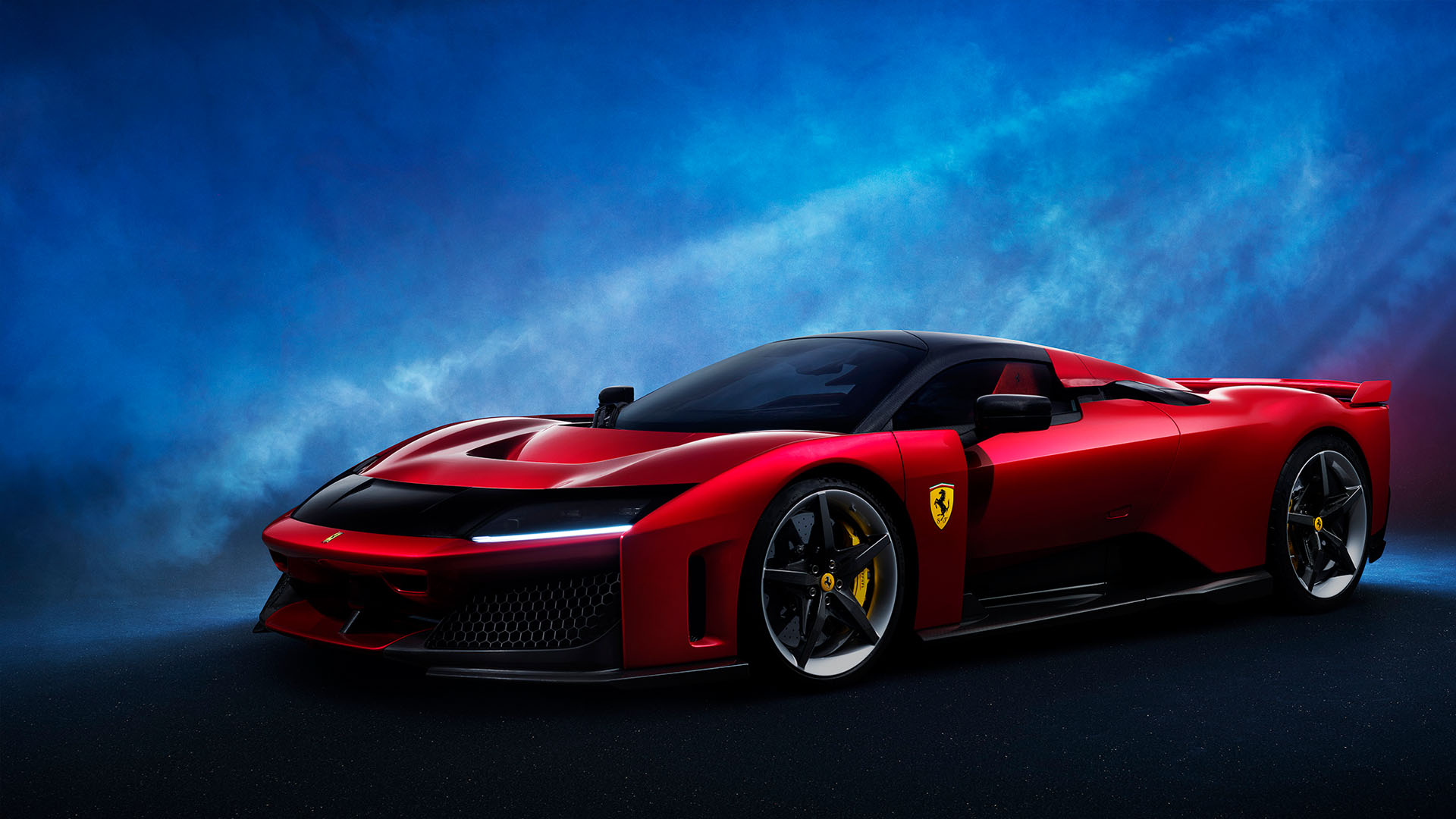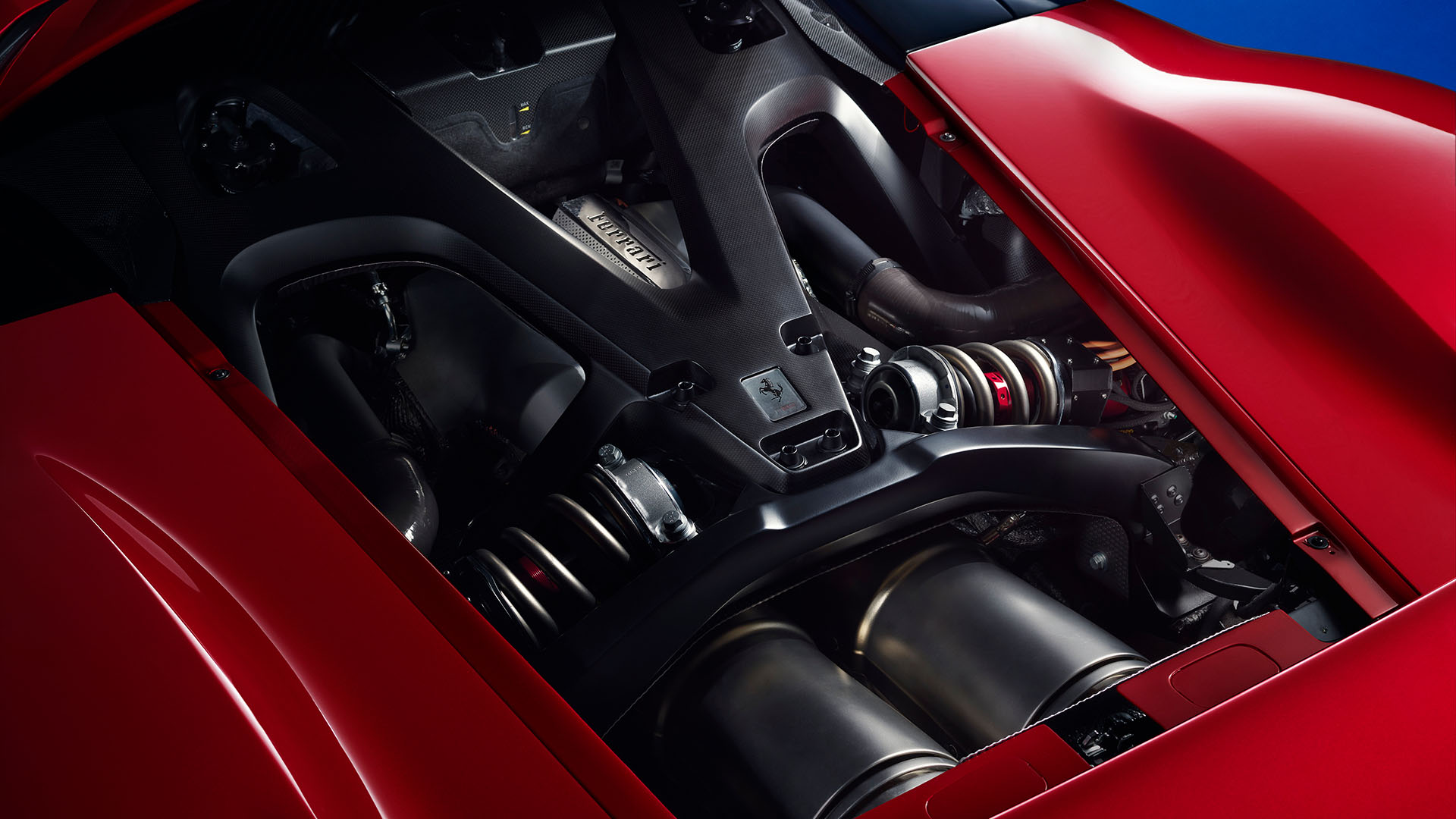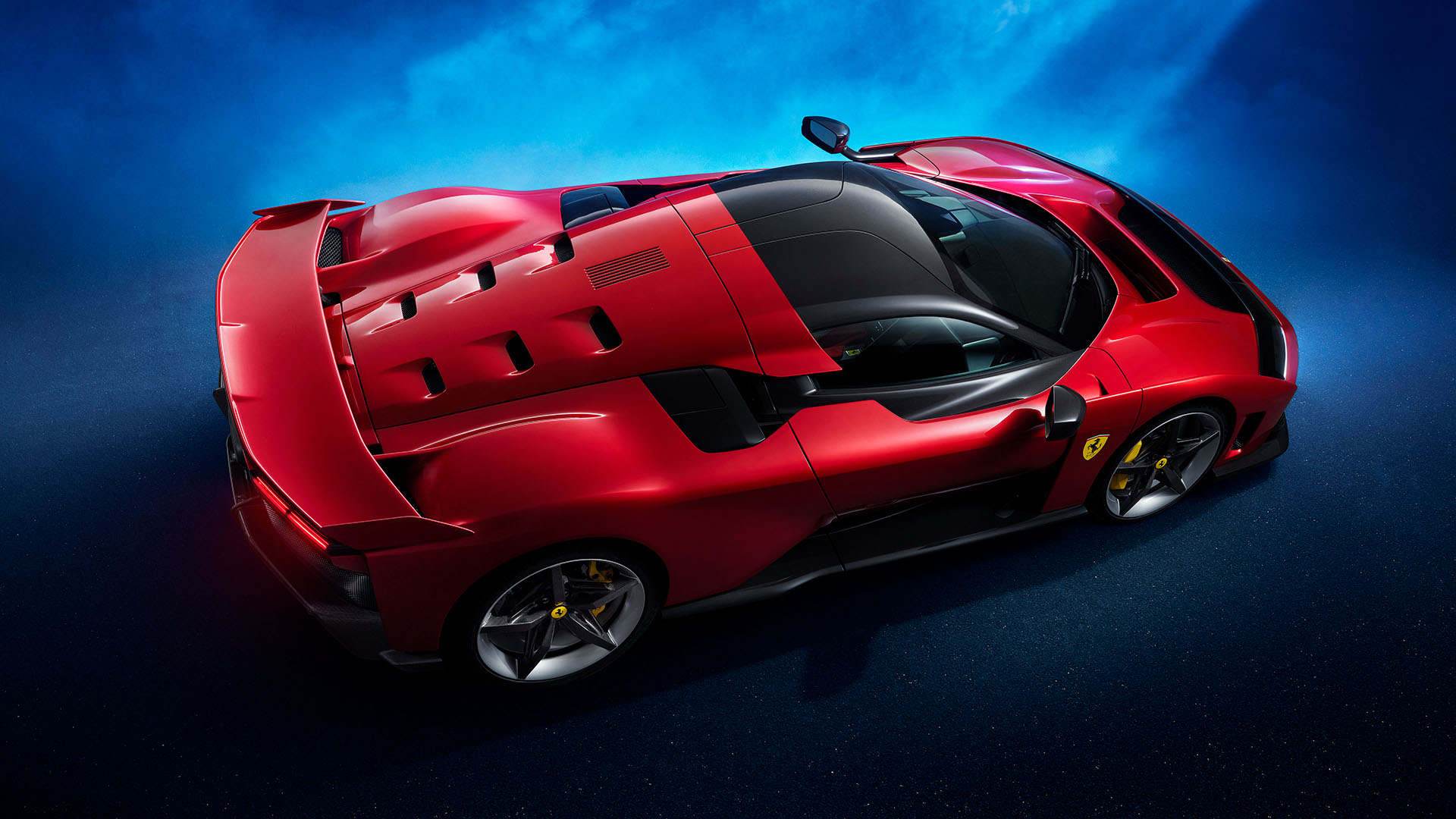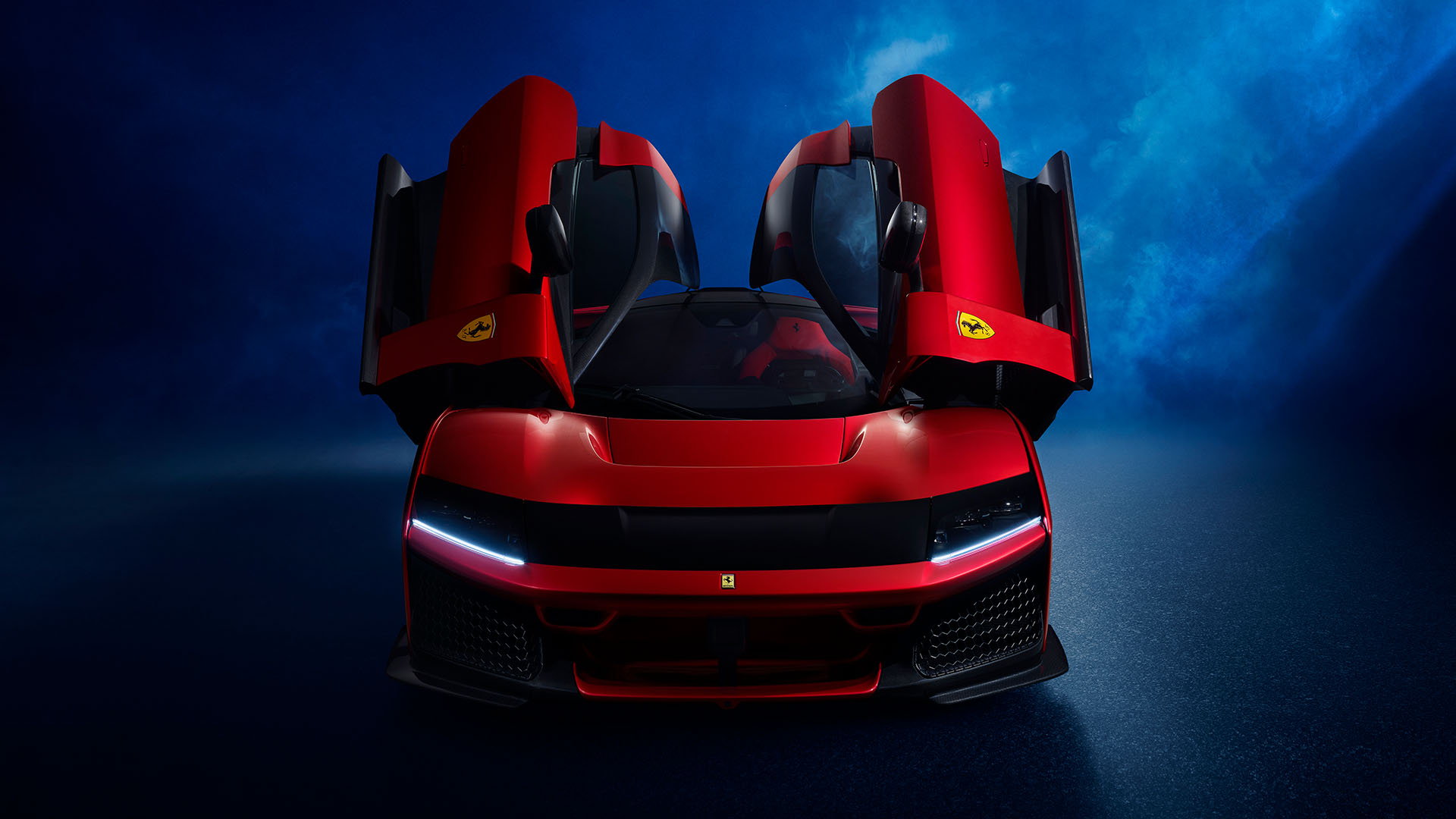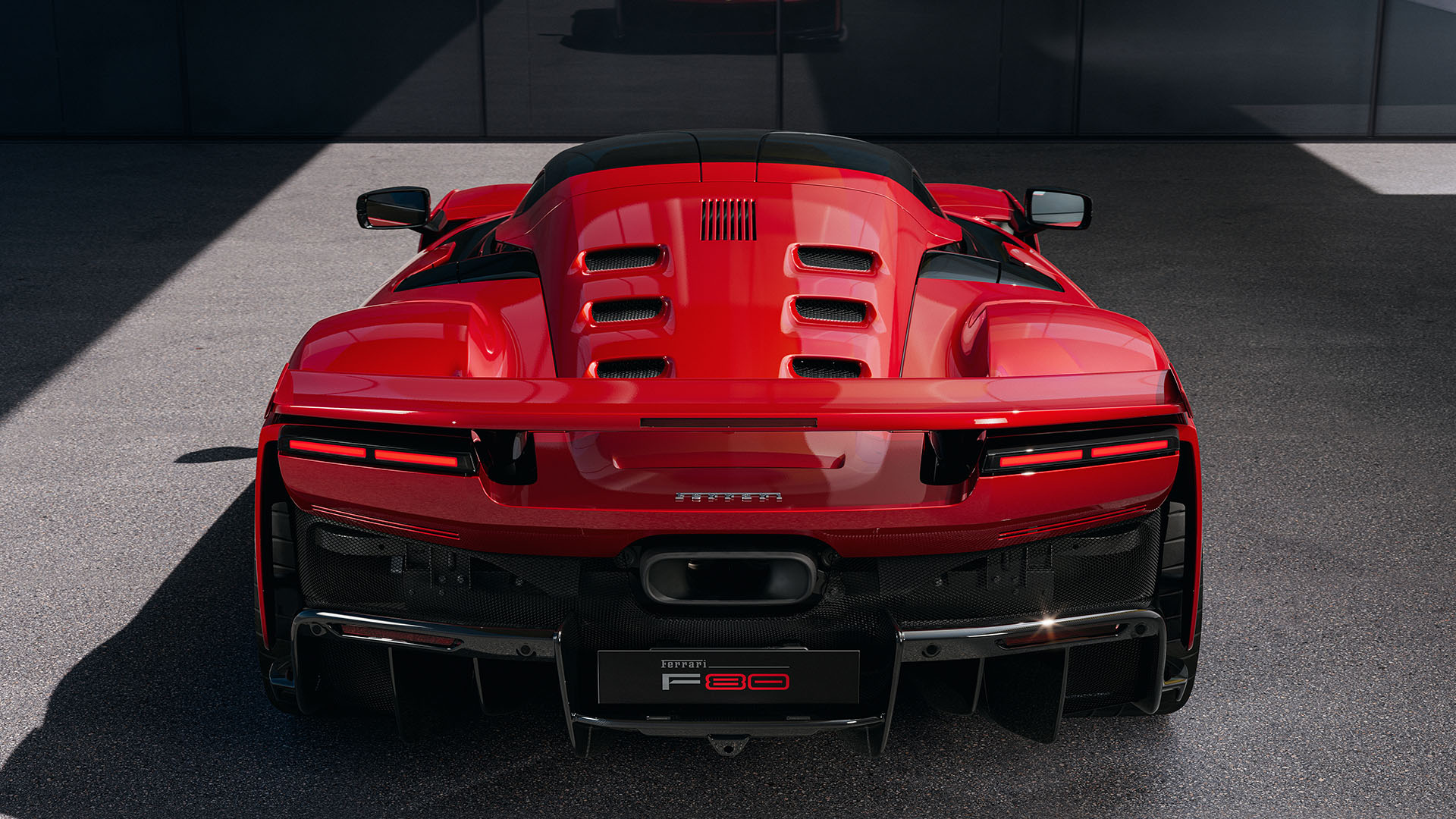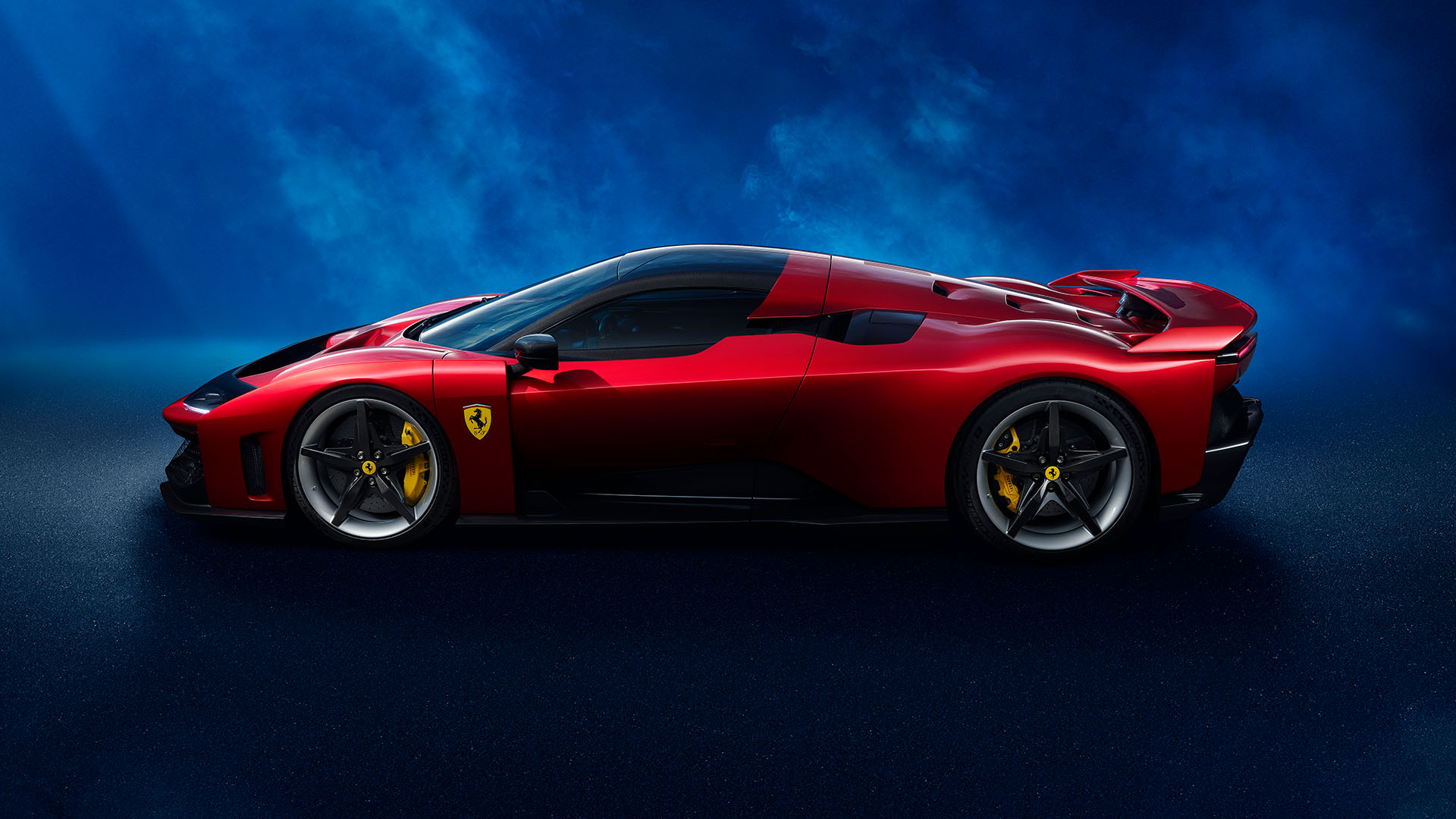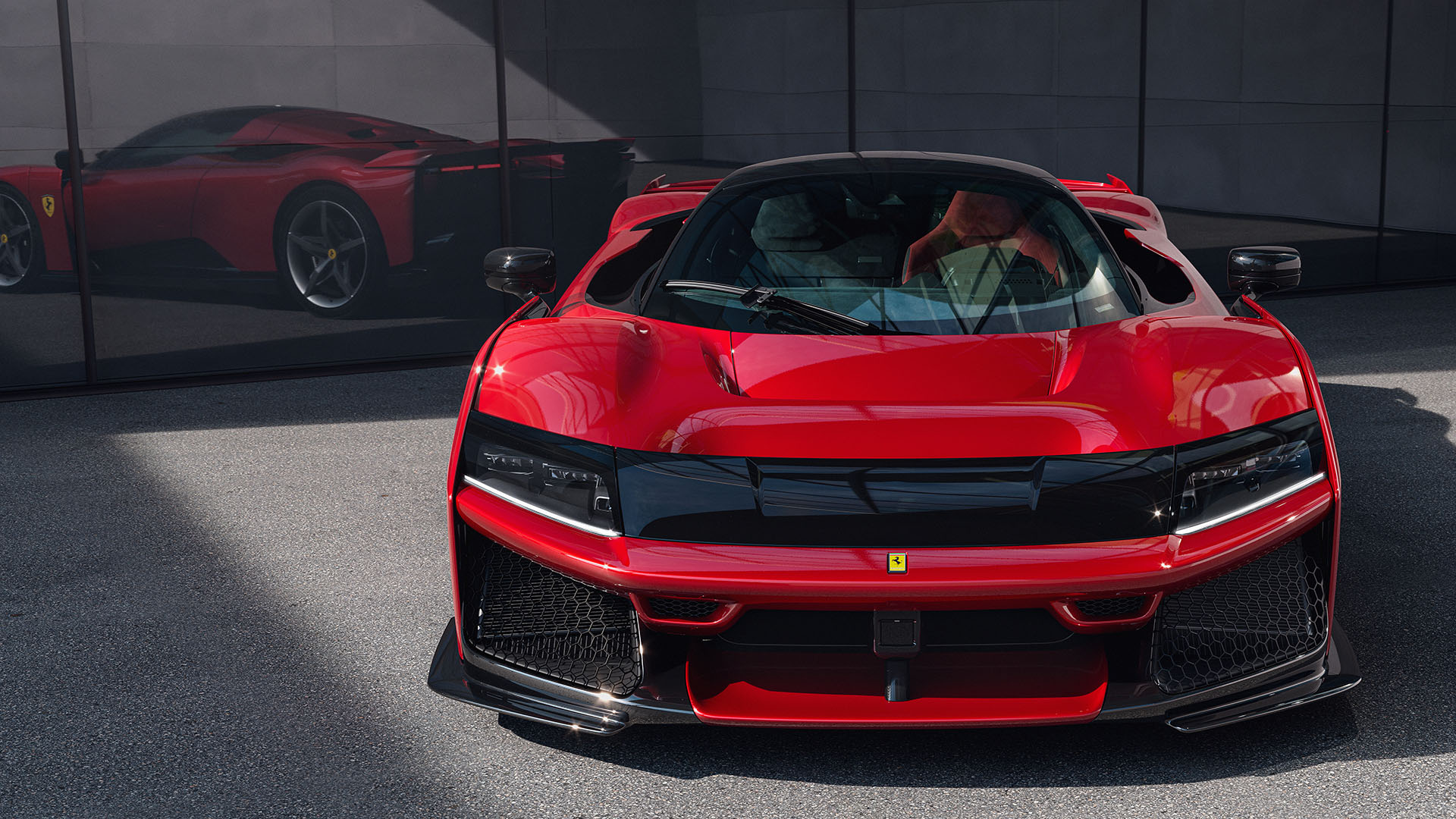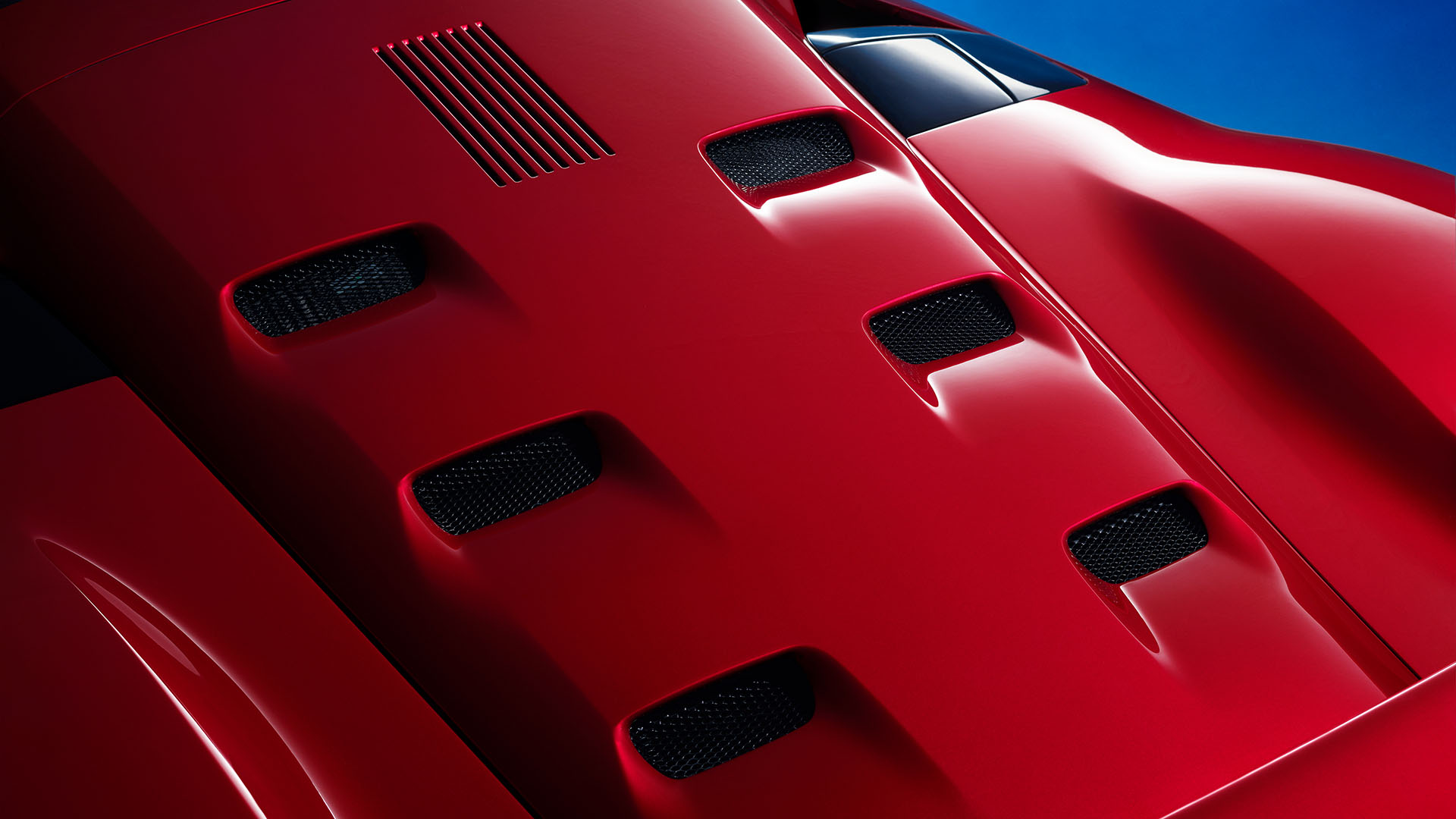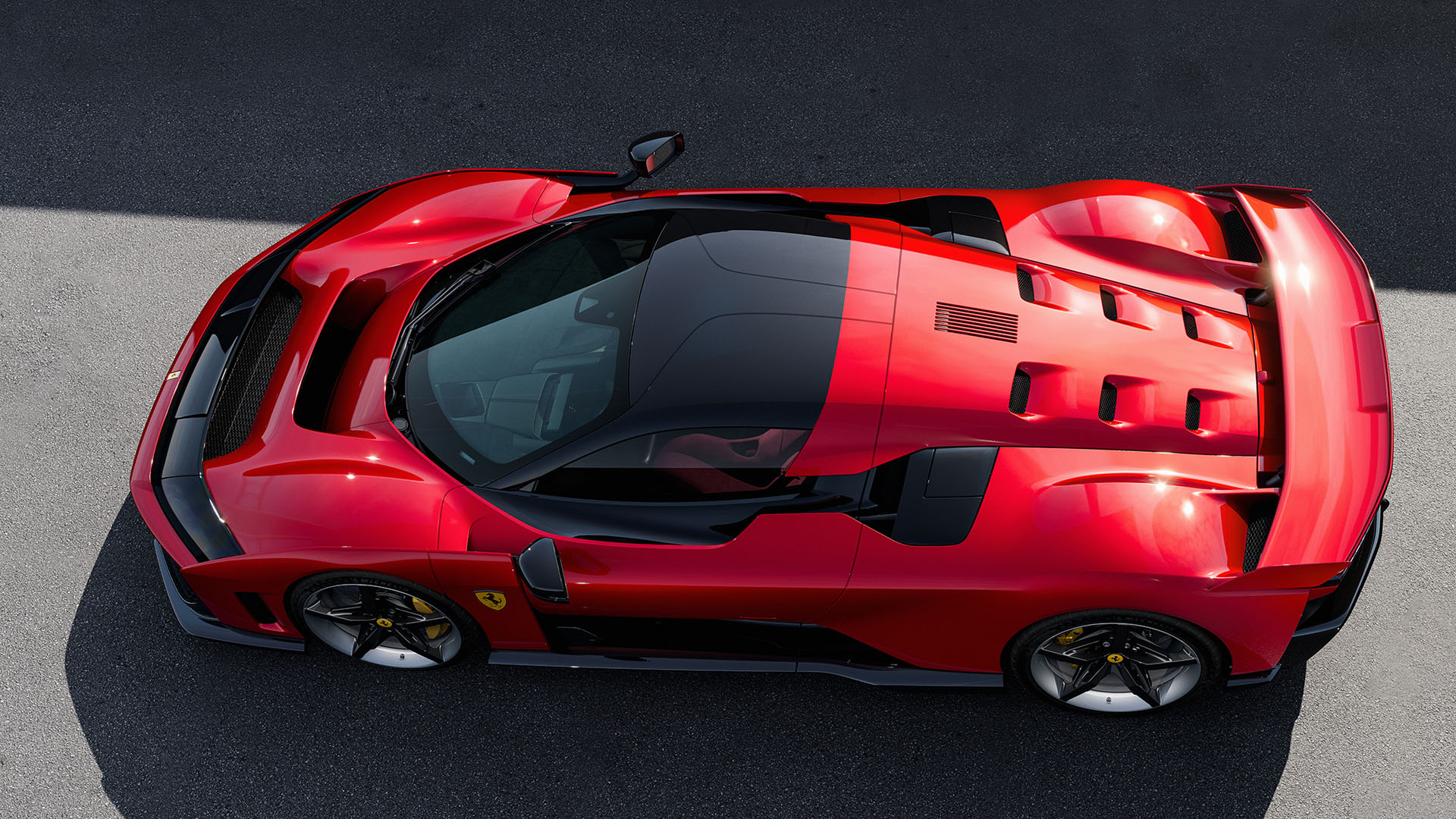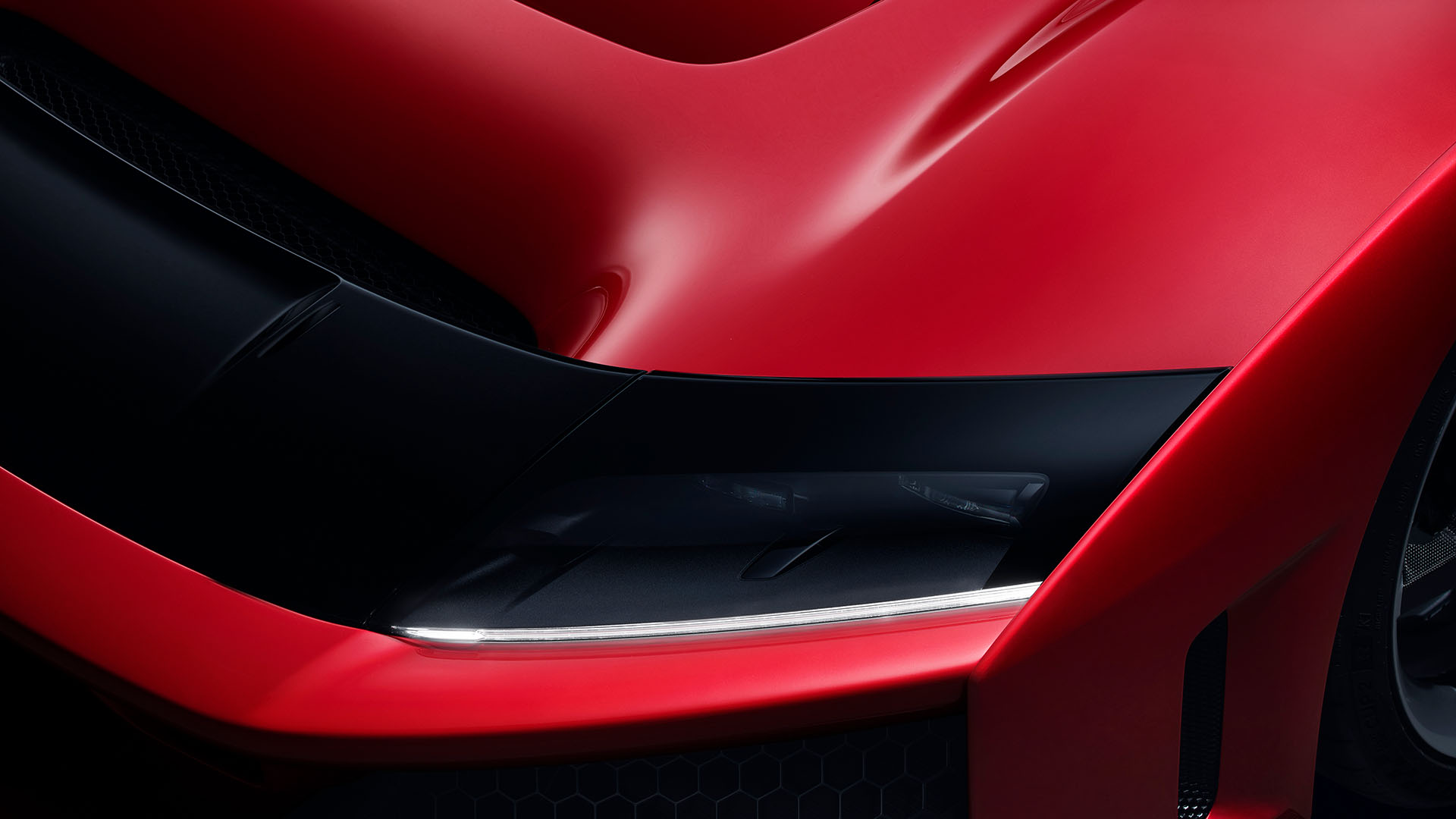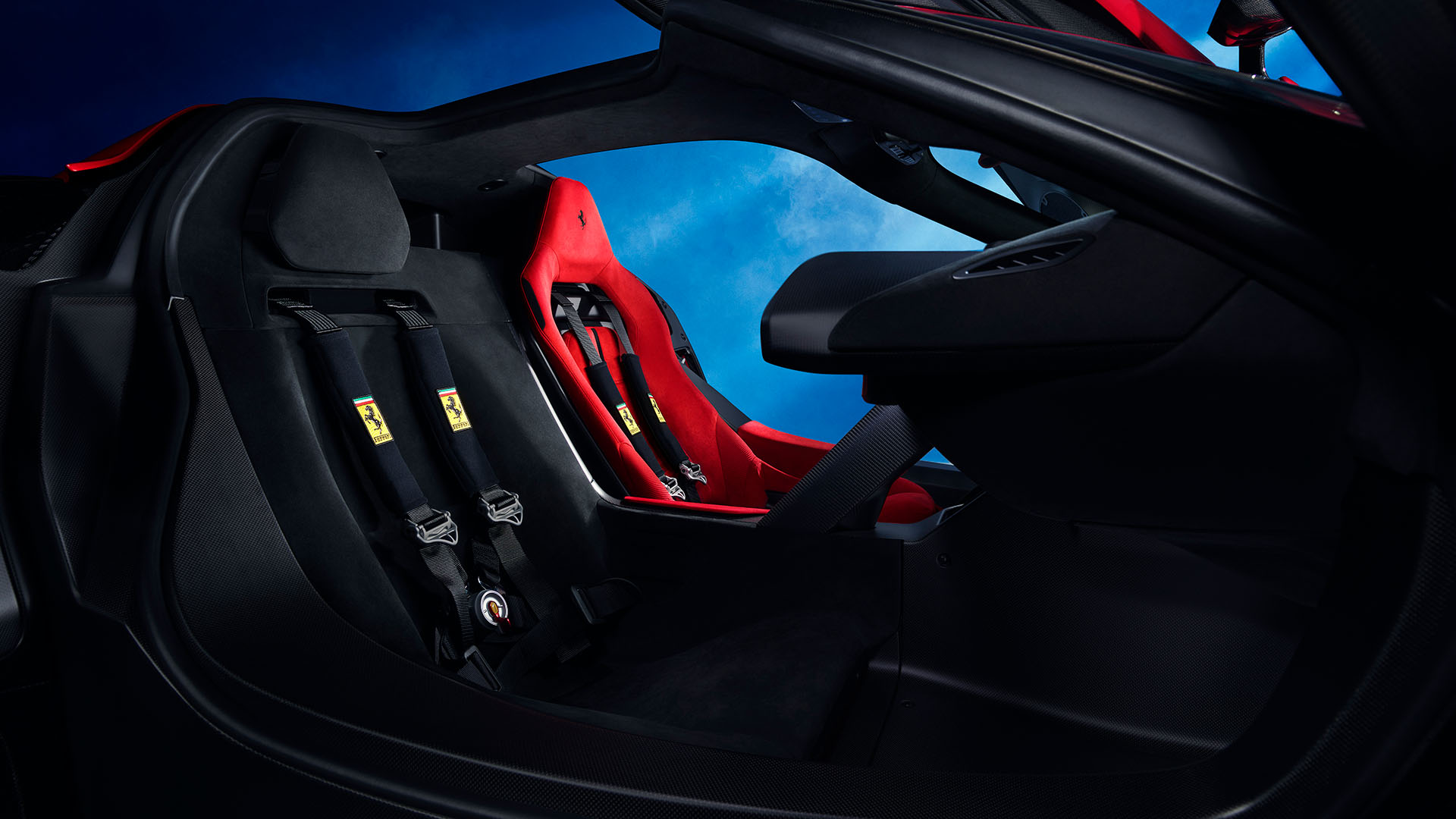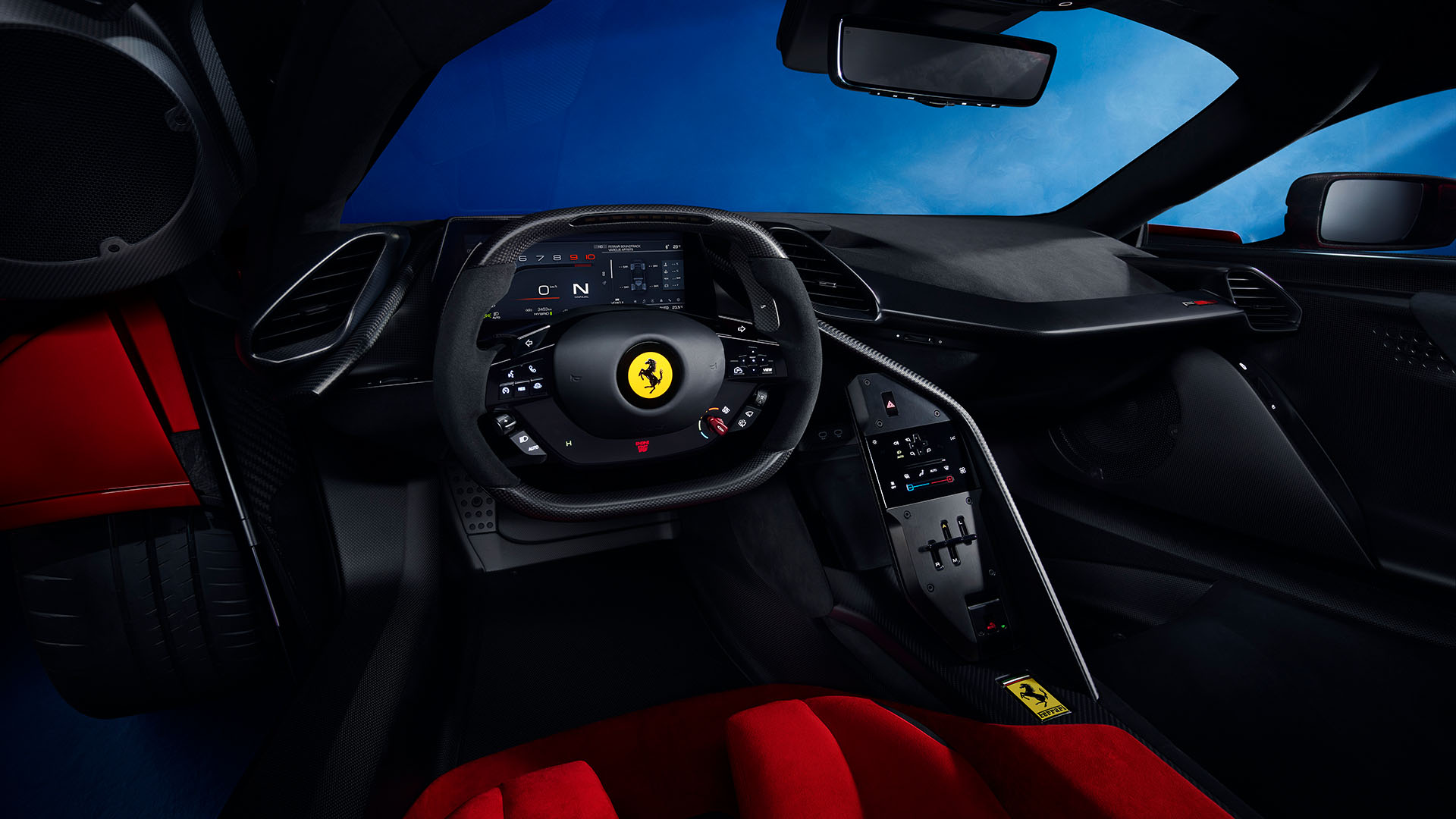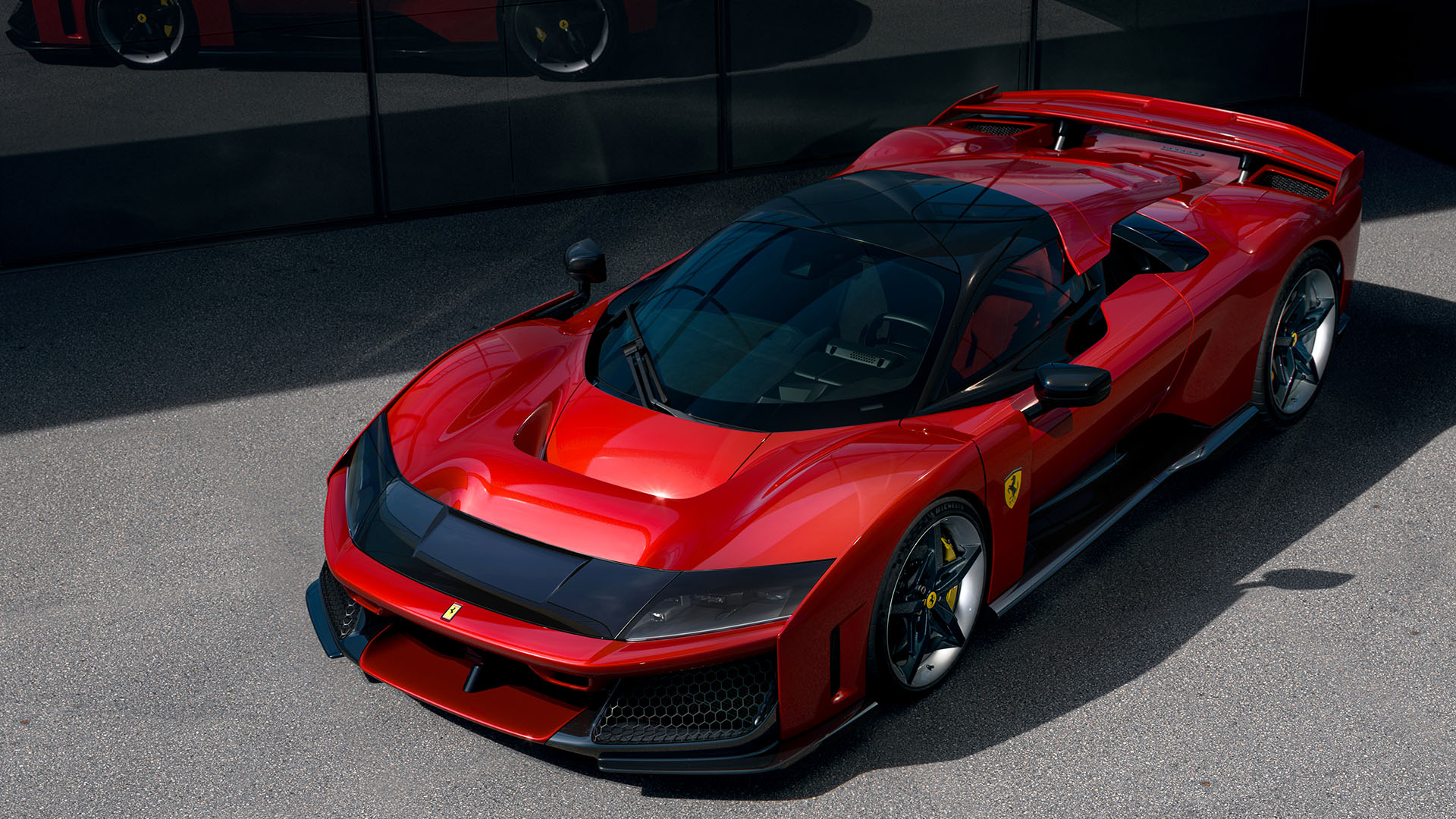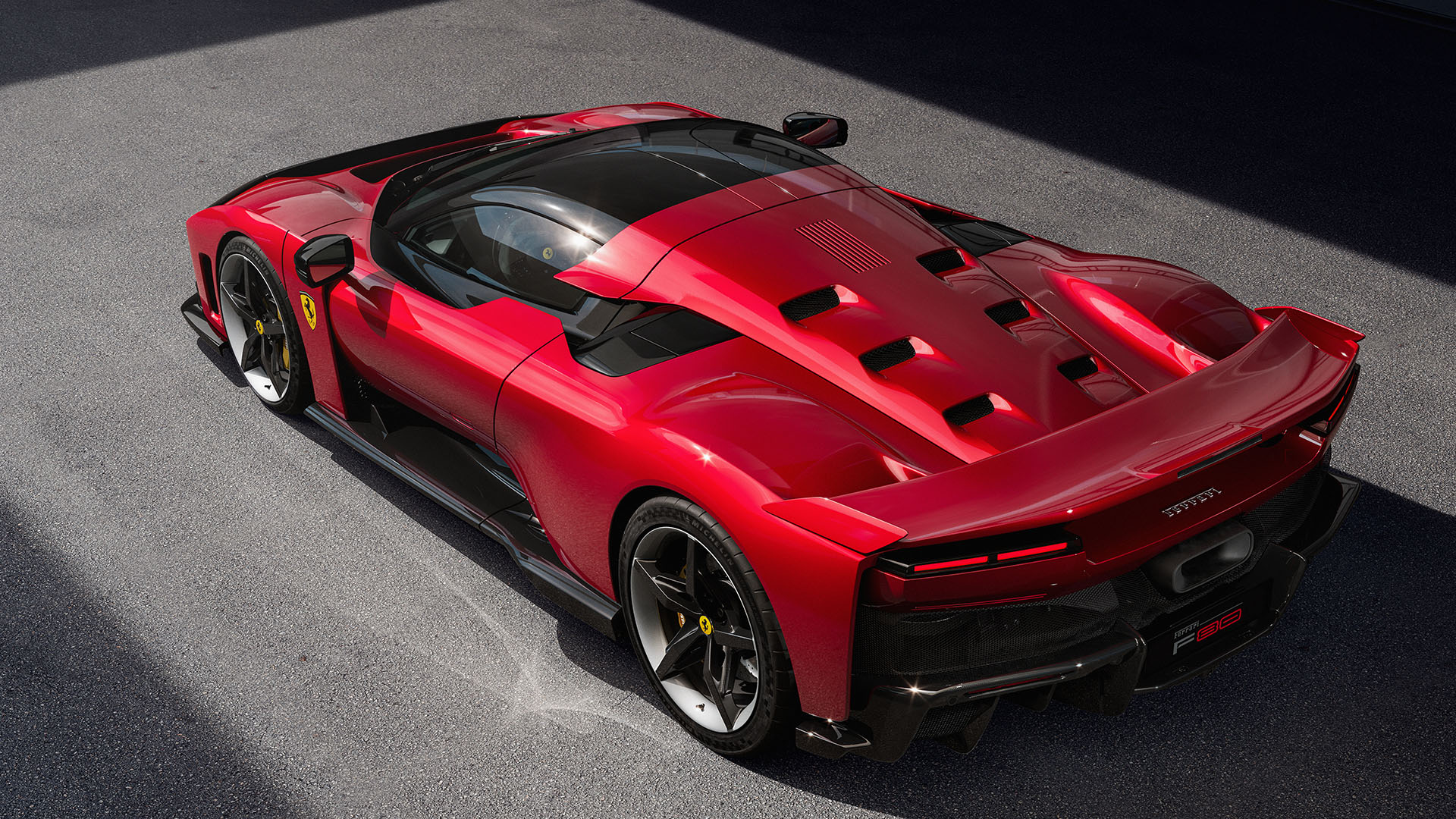Over the last decades, some truly amazing masterpieces have come from the factory gates in Maranello, Ferrari has been building automotive icons since the beginning with cars like the 250 GTO, but it was in 1984 that the famous GTO name returned to a production car in the form of the 288 GTO, which evolved into magnificent F40, as close as you could get to an actual street-legal race car at that time, celebrating the 40th Anniversary, followed a decade later by the F50, somewhat of a street-legal Formula One car, and let’s not forget the LaFerrari, all highly sought-after supercars made in Italy, and Ferrari has just written the next chapter in this illustrious series … the F80.
Where the 288 GTO and F40 were fitted with a V8 engine, the F50 with a V12 and the LaFerrari with a V12 hybrid powerplant, the new F80 hides a 120° V6 engine underneath that beautiful aerodynamic bodywork, but make no mistake, this 3-Liter beauty puts down 900 hp, making it the Ferrari engine with the highest specific power of all time (300 cv/l), and that’s not even all of it, remember we’re in the hybrid era these days, so there is an electric front axle and a rear motor adding another 300 hp into the mix for a total of 1,200 hp … in a road-legal, limited edition Ferrari.
Inspiration for this V6 engine comes straight from racing, more specifically the unit from the Ferrari 499P that won the last two editions of the legendary 24 Hours of LeMans, and this translates into a maximum engine speed of no less than 9,000 rpm, with a dynamic limiter as high as 9,250 rpm, and despite an additional power of 237 hp compared to the engine of the production model 296 GTB, this new engine doesn’t put any more weight on the balance, an amazing feat from the Ferrari engineering team. Thanks to the offset angle of 120° and a firing order of 1-6-3-4-2-5 we still get a traditional Ferrari sound from the Inconel exhaust manifolds.
For the first time, Ferrari has developed, tested, and built electric motors for the Ferrari F80 in-house. Two electric motors are on the front axle, one for each wheel, to create a 4WD setup, and an additional electric motor is mounted at the rear of the car. These electric motors use solutions derived from the design of the MGU-K unit used in Formula 1, thanks to some amazing engineering, the entire electric motor setup on the front axle only weighs 61,5 kg, while the inverter from the high-voltage battery is capable of delivering 210 kW of power to the front units, while the rear electric motor can receive up to 60 kW of power to assist the internal combustion engine or generate up to 70 kW to feed the high-voltage battery in regeneration mode, this battery pack is configured with 204 cells connected in series and subdivided equally into 3 modules, for a total energy capacity of 2.3 kWh and a maximum power output of 242 kW.
The new Ferrari F80 takes aerodynamic performance to never-before-seen highs, there is a total of 1,000 kg of downforce at 250 km/h from a perfect symbiosis between all the internal Ferrari departments working on the definition of the car’s architecture; for each department, the perfect balance between downforce and top speed was the basis for every design choice, giving shape to a suite of extreme solutions befitting a true supercar. At the front the F80 was inspired by the aerodynamic concepts employed in Formula 1 and World Endurance Championship (WEC), developing 460 kg of downforce at 250 km/h.
At the rear of the F80, we get the remaining 590 kg of downforce at 250 km/h thanks to combining the active rear wing with the diffuser, the expansion volume of the diffuser itself has been maximized by inclining the engine-gearbox unit by 1.3° in the Z axis, and by the configuration of the rear chassis and suspension components. The starting point of the upward curvature of the diffuser has been brought forward, resulting in a diffuser measuring a record-breaking 1800 mm in length, which generates a huge low-pressure zone underneath the vehicle, which in turn draws a massive flow of air into the underbody area.
The active wing is the most visually distinctive aero feature of the F80, which completes the entire aerodynamic concept of the vehicle. The actuator system of the rear wing adjusts not only its height but also controls the angle of attack continuously and dynamically, for precisely modulable downforce and drag. In the High Downforce (HD) configuration, which is used during braking, turn-in, and cornering, the wing assumes an angle of 11° relative to the direction of the airflow to generate over 180 kg of downforce at 250 km/h.
The body of the Ferrari F80 is completely made from pre-preg carbon fiber, created similarly to Formula1 cars, and the F80 comes with ‘Butterfly doors’ similar to the ones seen on the legendary LaFerrari, with a dual axis of rotation hinge mechanism allowing them to open vertically to an angle of almost 90°, and just like the rest of the body, these doors are made from high-performance carbon fiber to become a structural part of the body in case of a side impact during an accident, furthermore the rear engine cover takes styling cues from the door, featuring six air vents to allow hot air from the V6 engine to escape, with an additional grille to vent even more air.
The F80 has some clear references to aerospace in her overall design to get a futuristic impact in her looks, defined by a dihedral cross section with its two bottom corners clearly set down on the wheels while the side view comes with a visual flow that shows the importance of the massive rear wing on the F80, and when you take a closer look at the wheel arches with that vertical panel, you just have to remember the design we’ve seen on the legendary Ferrari F40. If you keep looking at the new Ferrari F80 from the side, you’ll notice the ‘floating bubble’ of the cockpit, which happens to be 50 mm lower than the greenhouse seen on the LaFerrari, making the F80 look wide-shouldered while the cockpit still looks compact.
Something we’ve been seeing on a lot of cars, especially on the recent Ferrari models, is the use of bodywork finished in a nice color being contrasted with clear carbon fiber accents to set apart the overall design of the car, be it with carbon fiber lower front bumper, side sills, and rear diffuser, but usually also part on the bodywork itself, like exterior rearview mirrors, or air intakes carved into the body, or even the roof panels, but for the Ferrari F80 they wanted to do something different, so on this model, the headlight are hidden underneath some kind of visor, a black screen that’s both aerodynamic and has a lighting function to give an unmistakable appearance to the F80.
For the interior the Ferrari designer wanted to focus on the driver, almost creating a single-seater vibe inside a supercar that can still seat two people in relative comfort during their drive behind the wheel of this limited-edition model from Maranello, when you look at the seats inside the F80 you get the impression this is a 1+ design as Ferrari calls it, which starts with the control panel of the F80 being ergonomically oriented towards the driver, almost creating a cocoon around the person behind the steering wheel.
To further emphasize that impression of a single-seater car, the passenger seat is upholstered in a totally different color to the driver’s seat, making the passenger blend into the rest of the cockpit, making the seat almost invisible in the grand scheme, putting the seat at a longitudinal offset compared to the driver’s seat sets the passenger seat further backward, which helped in designing the entire cockpit narrower compared to the LaFerrari for instance.
For the new F80, Ferrari developed a new steering wheel, which will be used in other road-going models in the future, ever so slightly smaller than previous steering wheels, this new unit comes with flattened top and bottom sections, and a smaller boss, which improves visibility and gives an unmistakable sense of sportiness in your hands. The outsides of the steering wheel itself are optimized to ensure a better grip with or without gloves. But the best improvement over the previous steering wheel are the actual buttons we now get on either side of the spokes, no more full-digital layout as before, back to basics with easier-to-use buttons that can be instantly identified by touch.
The Ferrari F80 will be made in a strictly limited production run of just 799 units, if you are interested in some figures, the maximum speed is listed at 350 km/h with acceleration numbers of 0 to 100 km/h in just 2.15 seconds, 200 km/h is reached in a mere 5.75 seconds from a standstill, very impressive for a car with an overall weight of 1,525 kg … the press release doesn’t mention an MSRP, but rumor has it you’ll be looking at an invoice of $3,900,000 to add one of these supercars to your garage, but you probably won’t be able to walk into your local Ferrari dealership and sign an order form, these limited edition Ferrari are available ‘on invitation’ only, sorry.


